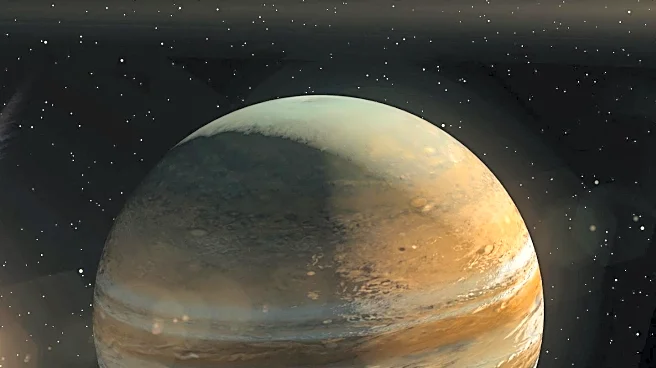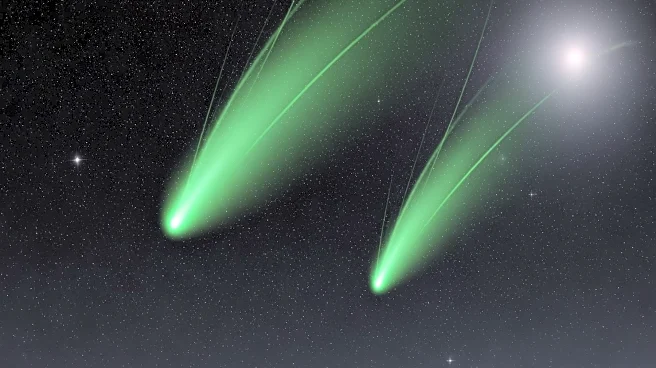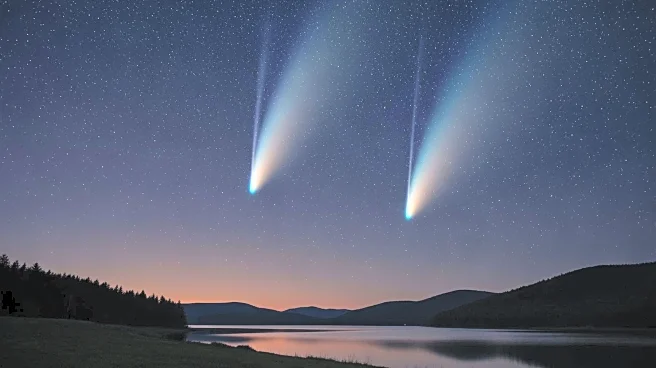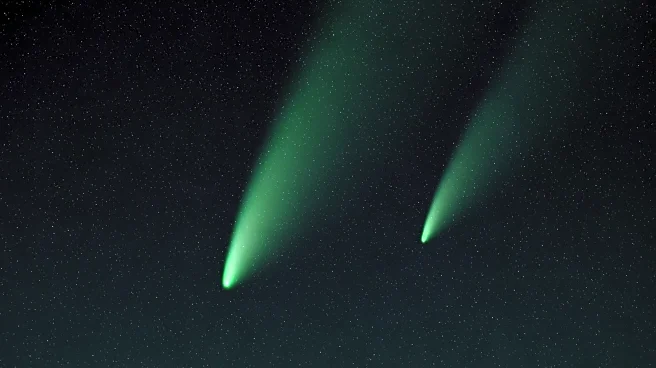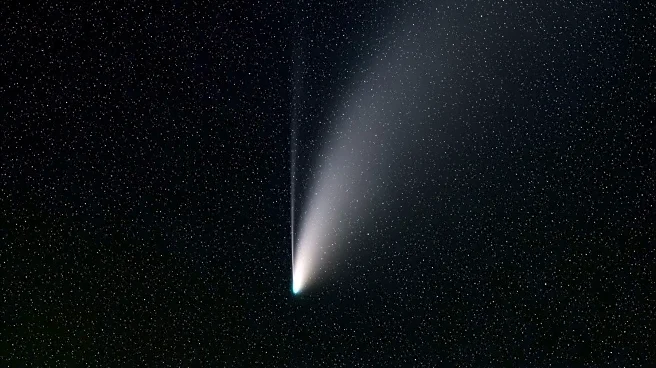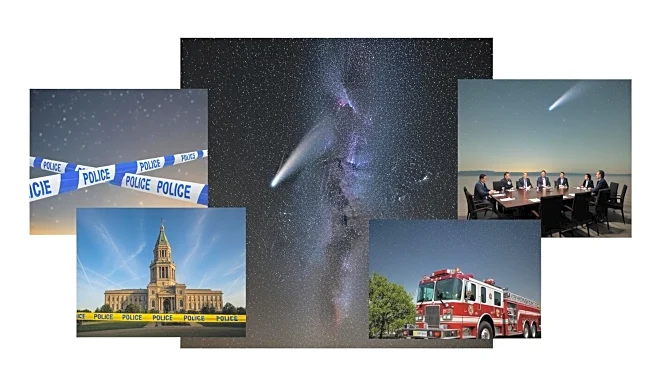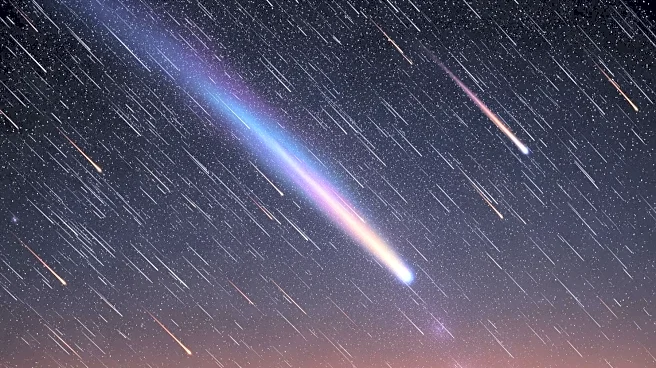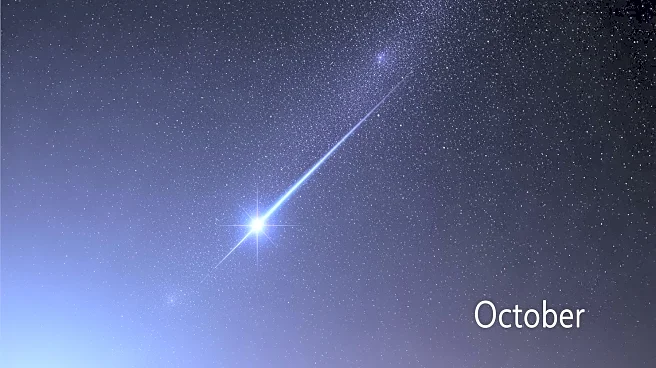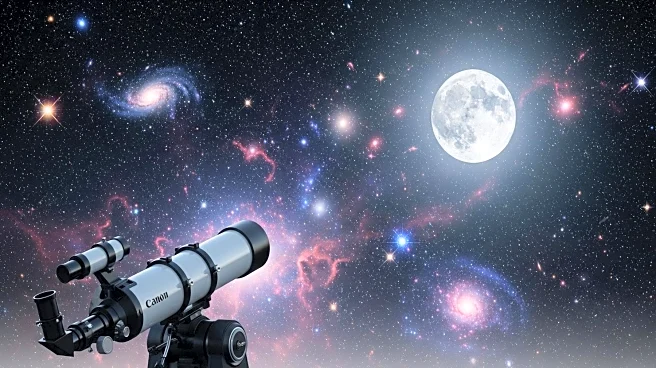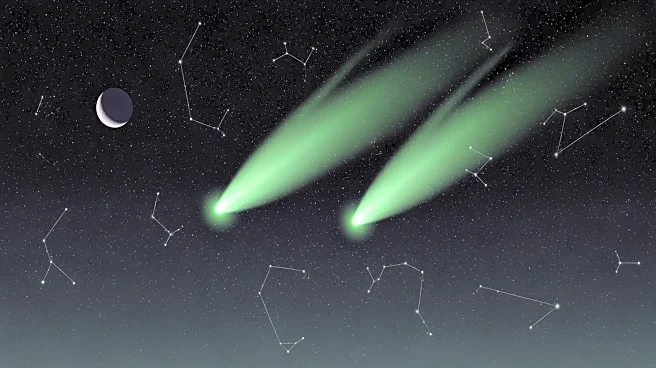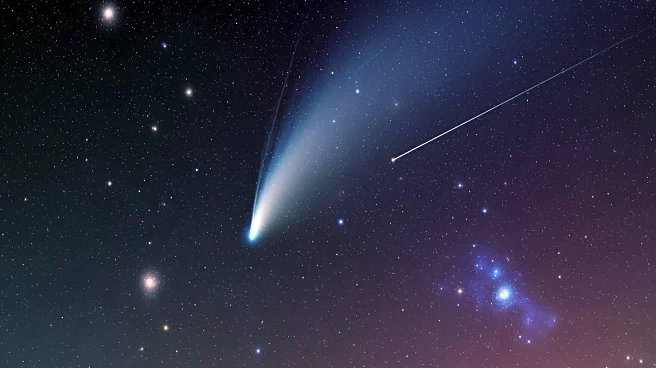What's Happening?
Sky & Telescope provides a detailed overview of astronomical events occurring from October 17 to 26, 2025. Two binocular comets, C/2025 A6 Lemmon and C/2025 R2 SWAN, are passing closest to Earth and are expected
to be at their brightest. Comet SWAN will be visible in the southwest to south after dark, while Comet Lemmon will be visible in the northwest to west at dusk. Additionally, Jupiter will offer double-shadow transits visible from the West Coast and Hawaii, with its moons Io and Europa casting shadows onto the planet. The Orionid meteor shower is predicted to peak late on October 21, offering a chance to observe 10-20 meteors per hour under optimal conditions. The article also provides guidance on spotting various constellations and celestial objects during this period.
Why It's Important?
These astronomical events offer unique opportunities for amateur astronomers and sky enthusiasts to observe rare celestial phenomena. The visibility of comets and meteor showers can enhance public interest in astronomy and provide educational opportunities for schools and community groups. Jupiter's double-shadow transits are particularly significant for telescope users, offering a chance to witness dynamic planetary interactions. The Orionid meteor shower, with its potential for high meteor counts, can attract viewers and promote awareness of cosmic events. These occurrences can inspire interest in science and technology, potentially influencing educational and career choices in related fields.
What's Next?
As these events unfold, astronomers and enthusiasts will continue to monitor the skies for optimal viewing conditions. The visibility of comets and meteor showers may lead to increased public engagement and organized viewing events. Educational institutions and astronomy clubs might schedule activities to capitalize on these celestial occurrences. The ongoing interest in astronomy could lead to further investment in telescopic equipment and educational resources, fostering a deeper understanding of the universe.
Beyond the Headlines
The fascination with celestial events underscores the human desire to explore and understand the universe. Observing these phenomena can foster a sense of connection to the cosmos and highlight the importance of scientific inquiry. The cultural and historical significance of astronomy, as a tool for navigation and timekeeping, continues to resonate in modern society. These events can also prompt discussions on the role of space exploration and the potential for future discoveries.
